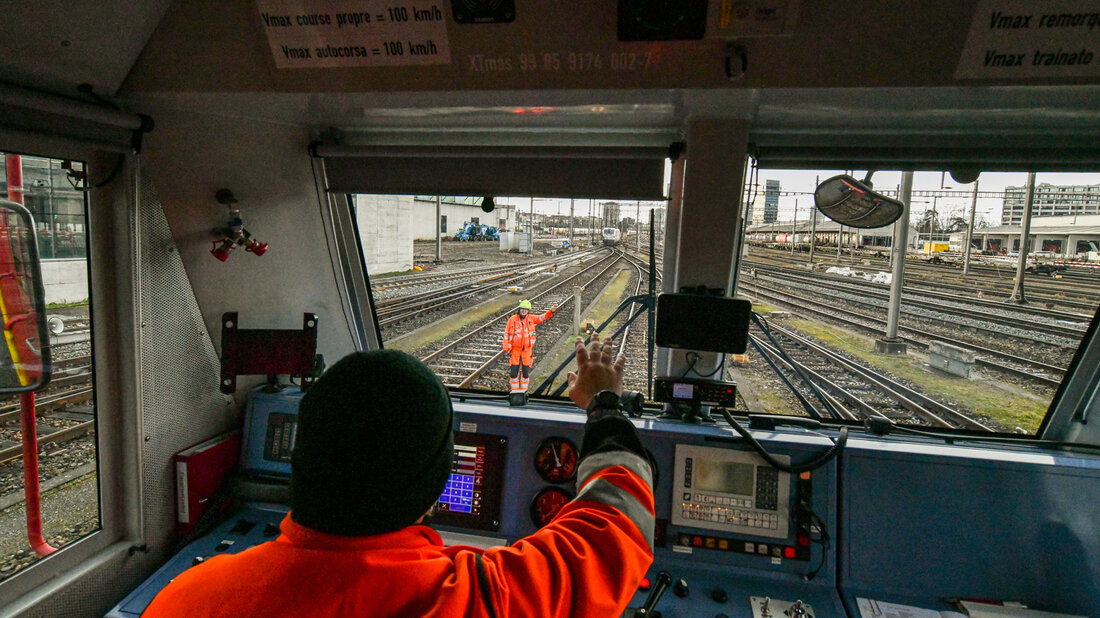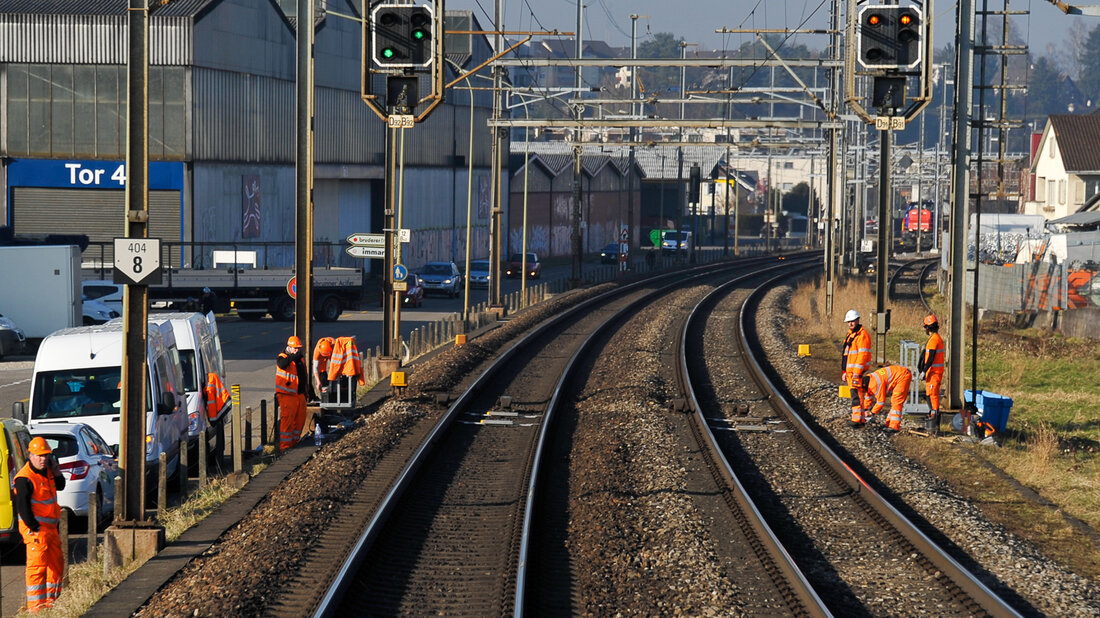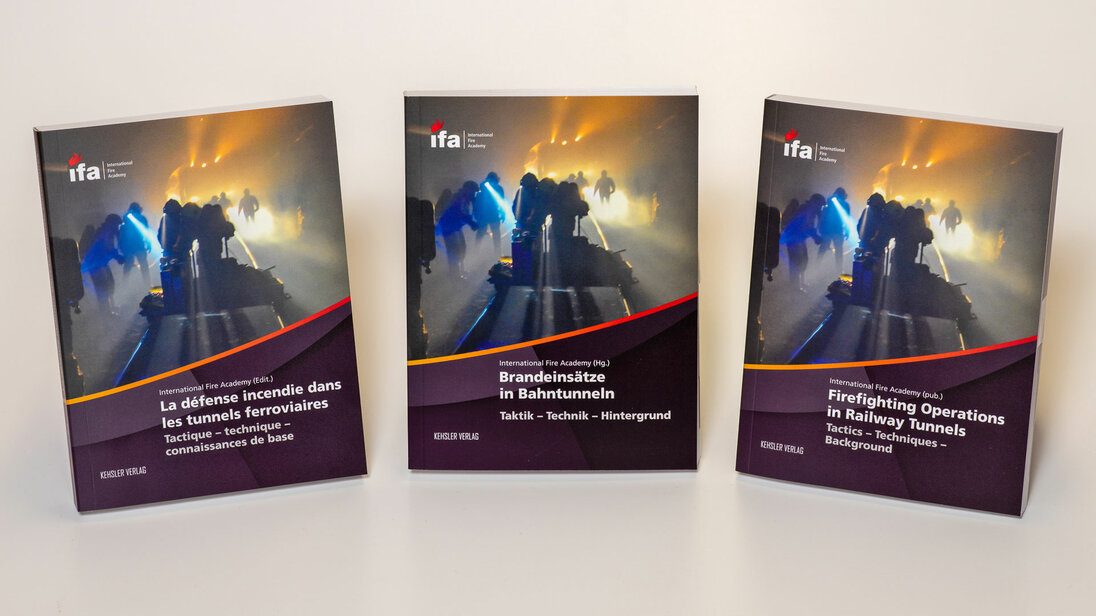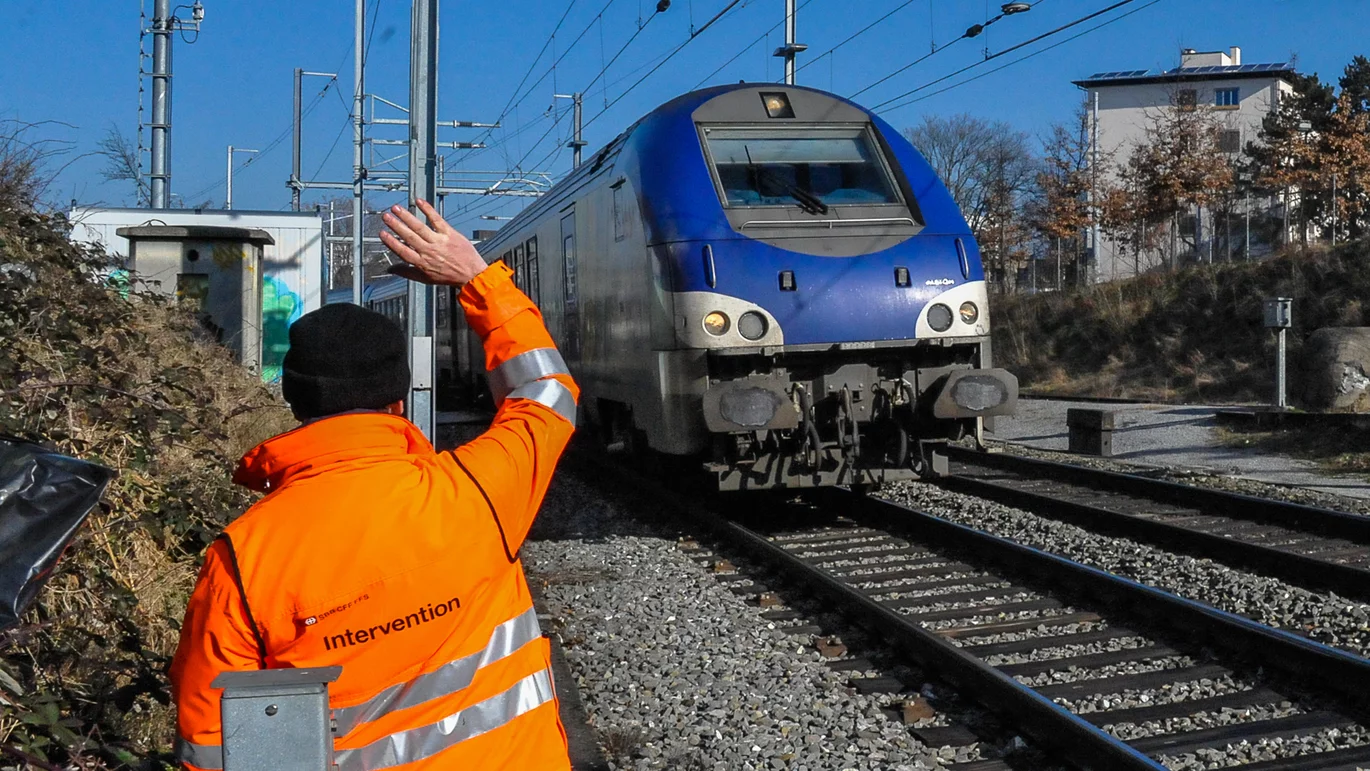The International Fire Academy instructs: If a rail vehicle approaches the scene of the incident, the driver must be given a hand signal. Course participants frequently wonder whether this is really necessary. That is why we asked a train driver at the Swiss Federal Railways (SBB) directly and got the answer: «Yes, it is extremely important. It helps us very much!». Find out why.
«I see you»
One of the most important safety rules for operations on railway tracks is to only work in the danger zone when railway traffic is discontinued. But even then, railway traffic intended for the incident is always to be expected, for example, diesel-powered firefighting and rescue trains, shunting locomotives for moving railway wagons or construction vehicles such as cranes. If emergency personnel see such rolling stock, they should make visual contact with the driver and give him a hand signal meaning «I see you». For example, the same applies to walking around the rescue areas at the track directly in front of the portals.

Not an act of courtesy
However, the hand signal to the train driver is not meant as a friendly greeting but «serves safety and is therefore mandatory in Switzerland for all employees working on the tracks,» explains Damiano Fattini. He is an SBB train driver, and in addition to passenger trains, he also drives firefighting and rescue trains (FRT). «If I have to fear that the person on the track will be endangered by the train, I have to initiate emergency braking, depending on the situation.» Due to the emergency braking, passengers on the train could be thrown forward and seriously injured. «However, if the person on the track gives me a hand signal, I can assume they are behaving correctly.»
Stand still, keep distance, and observe
But what is «correct behaviour»? Damiano Fattini explains:
- Keep distance! (According to Swiss safety rules, at least 1.5 metres from the track).
- Stand still, to avoid tripping.
- Watch the train because, for example, a loose tarp from a loaded truck could flap in the wind and hit people close to the track.
- Wait until the train has passed through.
And if the persons on the track do not do this? «Then we blow the whistle, and at the latest, then the person should clearly react. If they do not do so, they endanger themselves and the people on the train or the emergency personnel on the FRT,» warns Damiano Fattini and appeals: «Communicate with us. It makes us feel much better!"»

General safety rules for railway operations
Basic safety rules for operations on railway facilities are summarised in the textbook «Firefighting Operations in Railway Tunnels».



